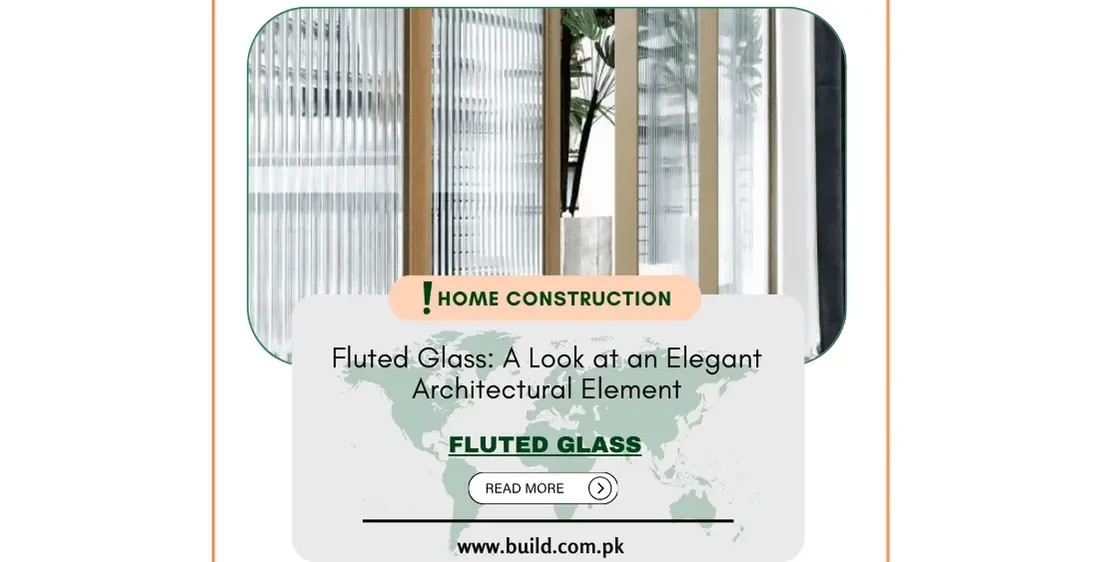Fluted Glass: A Look at an Elegant Architectural Element

Introduction:
Fluted glass, characterized by its distinctive vertical grooves or channels, is a versatile architectural material that adds elegance, texture, and functionality to various interior and exterior applications. In this comprehensive guide, we will delve into the unique characteristics, benefits, deign applications, manufacturing processes, and maintenance considerations of fluted glass. Whether you're considering incorporating fluted glass into your home, office, or commercial space, this guide will provide valuable insights to help you make informed design decisions and leverage the beauty of fluted glass in your architectural projects.
Understanding Fluted Glass:
Fluted glass, also known as ribbed glass or reeded glass,
features a series of parallel vertical channels or grooves that run along its
surface. These grooves can vary in depth, width, and spacing, creating a
distinct texture and visual effect. Fluted glass is typically produced by
passin molten glass through rollers or molds that imprint the desired pattern
onto the glass surface during the manufacturing process.

Characteristics of Fluted Glass
Fluted glass exhibits several distinctive characteristics
that make it a popular choice in architectural and interior design:
- Texture and Visual Appeal: The vertical grooves of fluted glass create a dynamic play of light and shadow, adding visual interest and texture to spaces.
- Privacy and Diffusion of Light: Fluted glass provides varying levels of privacy by obscuring direct views while allowing diffused light to pass through, making it ideal for partitions, doors, and windows.
- Enhanced Aesthetic Appeal: Fluted glass imparts a sense of elegance and sophistication to interiors, offering a modern yet timeless aesthetic.
- Versatility in Design: Fluted glass can be used in a variety of applications, from decorative panels and room dividers to lighting fixtures and furniture accents.
- Acoustic Properties: Depending on thickness and installation,
fluted glass can contribute to sound insulation and noise reduction in interior
spaces.
Applications of Fluted Glass
Fluted glass finds versatile applications in both residential
and commercial settings:
- Doors and Windows: Fluted glass panels are commonly used in doors and windows to enhance privacy while allowing natural light to filter through.
- Partitions and Screens: Fluted glass partitions are popular in offices, restaurants, and retail spaces, providing separation without blocking light or feeling closed off.
- Cabinetry and Shelving: Futed glass inserts in cabinetry doors or shelving units add visual iterest and a touch of elegance to kitchen and bathroom designs.
- Lighting Fixtures: Fluted glass is utilized in pendant lights, chandeliers, and wall sconces to create captivating lighting effects and soft diffusion of light.
- Furniture and Decorative Elements: Fluted glass can be
incorporated into furniture pieces such as tabletops, cabinet doors, and
decorative panels, lending a sophisticated look to interiors.
Manufacturing Process
The production of fluted glass involves specialized
techniques to achieve the desired texture and appearance:
- Rolling Process: Molten glass is passed through rollers or molds with grooves that impart the fluted pattern onto the glass surface.
- Molding and Presng: Fluted glass can also be produced using molds or presses that create the grooved pattern during the glass-forming process.
- Annealing and Finishing: After forming, fluted glass
undergoes annealing to relieve internal stresses and achieve desired strength
and durability. It may then be cut, polished, or further processed based on
specific design requirements.
Maintenance of Fluted Glass
Proper care and maintenance are essential to preserve the
beauty and functionality of fluted glass installations:
- Regular Cleaning: Clean fluted glass surfaces with a mild glass cleaner and soft cloth to remove dust, fingerprints, and smudges.
- Avoid Harsh Abrasives: Refrain from using abrasive cleaners or materials that may scratch or damage the glass surface.
- Inspect for Damage: Periodically inspect fluted glass panels for cracks, chips, or signs of wear, and address any issues promptly to prevent further damage.
- Sealants and Protectants: Consider applying a glass sealant
or protectant to maintain clarity and protect against staining or mineral
deposits.
Conclusion:
Fluted glass is a versatile and aesthetically pleasing architectural element that offers texture, privacy, and visual interest in interior and exterior design applications. By understanding its characteristics, applications, manufacturing process, and maintenance requirements outlined in this guide, designers, architects, and homeowners can harness the beauty and functionality of fluted glass to elevate their spaces with elegance and sophistication. Exploe the possibilities of incorporating fluted glass into your next design project to create captivating interiors that seamlessly blend style with practicality and timeless appeal.









